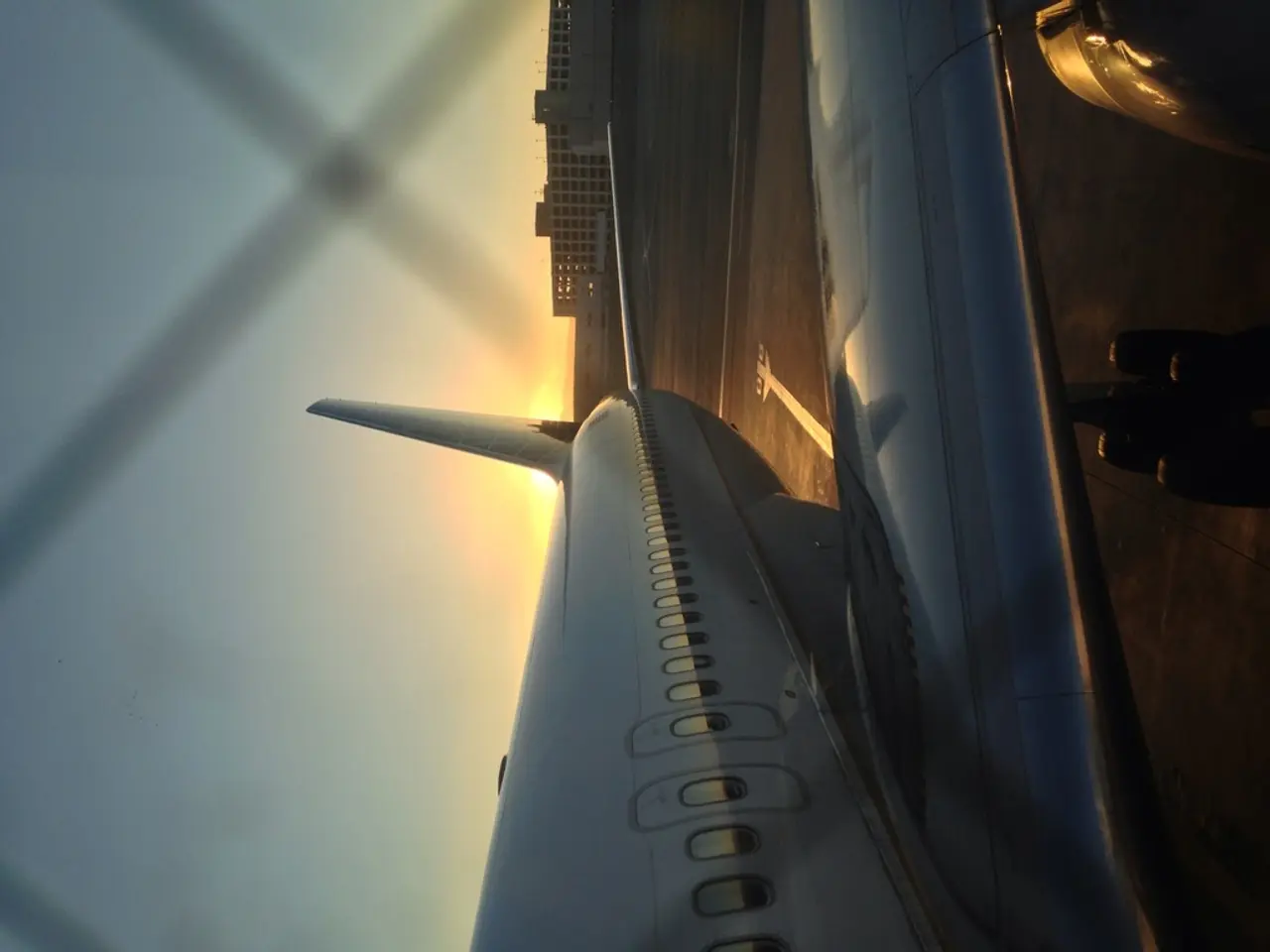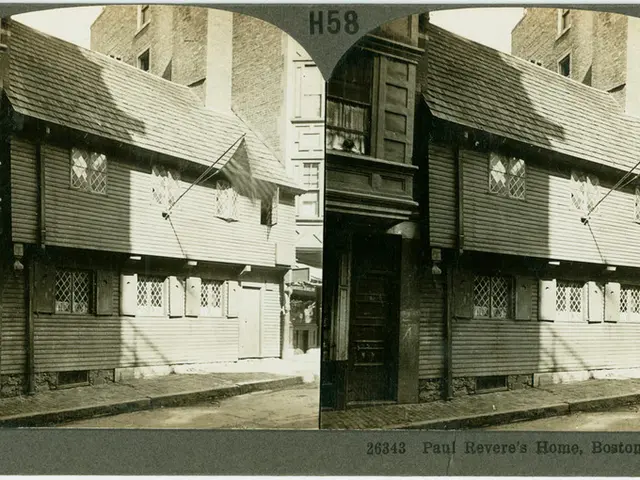Aircraft Window Pores: Purpose and Role
The Bleed hole (also known as the breather hole) in airplane windows plays a crucial role in maintaining the structural integrity and clear visibility of the windows. This tiny hole, often found on the middle layer of the window, serves two primary functions: equalizing air pressure between the cabin and the middle window pane, and preventing moisture buildup between window layers, thus avoiding fogging or frost [1][2][3][5].
Aircraft cabins, such as those in B787 and A350 type aircrafts, are pressurized to an altitude of 1,800 meters above sea level [4]. This pressure difference between the cabin and the outside air is significant, especially during takeoff and landing. The breathing hole allows for the equalization of pressure between the cabin and the outside air, ensuring the safety of the windows [6][7].
The third layer of the window is in direct contact with the harsh weather conditions outside the aircraft. The breathing hole, by allowing air to flow through, helps prevent the windows from experiencing excessive stress due to the pressure difference [1][3].
Moreover, the breathing hole evacuates moisture that accumulates between the second and third layers, preventing window misting. This is particularly important during flight, as the temperature difference between the inside and outside of the aircraft can lead to the formation of ice crystals around the breathing hole [8][9].
Despite some misconceptions, the breathing hole is not an unnecessary feature. Its role in maintaining the structural integrity of the windows during flight, as well as its contribution to the prevention of window fogging, makes it an essential component of airplane windows [10].
A plastic cover is placed on the innermost layer of the window to protect the glass from any potential damage. This cover, along with the breathing hole, contributes to the overall safety and functionality of the airplane windows [11].
In summary, the bleed hole in airplane windows is a vital safety feature that ensures the balance of pressure and prevents moisture accumulation, thereby maintaining the structural integrity of the windows and providing clear visibility for passengers during flight.
[1] https://www.airliners.net/aviation-forums/general_aviation/read.main/3786006/ [2] https://www.sciencedirect.com/science/article/pii/S157095021630115X [3] https://www.researchgate.net/publication/322096652_Aircraft_Window_Design_and_Performance [4] https://www.airlineratings.com/news/pressure-cabins-aircraft/ [5] https://www.aa.com/i18n/travel-info/airline-info/aircraft-information/airbus-a350-xwb.jsp [6] https://www.boeing.com/commercial/787/design/cabin/cabin-pressure.page [7] https://www.popularmechanics.com/science/airplanes/a26294/how-do-airplane-windows-work/ [8] https://www.airlineratings.com/news/pressure-cabins-aircraft/ [9] https://www.boeing.com/commercial/787/design/cabin/cabin-pressure.page [10] https://www.sciencedirect.com/science/article/pii/S157095021630115X [11] https://www.airliners.net/aviation-forums/general_aviation/read.main/3786006/
The industry standard in aerospace technology requires the inclusion of breathing holes in airplane windows, as they ensure the structural integrity and clear visibility of the windows, particularly during takeoff and landing when pressure differences are significant [6]. In the realm of airplane finance, the maintenance of such essential components is essential to guarantee passenger safety and comfort, contributing to the overall efficiency of the aircraft [10].








